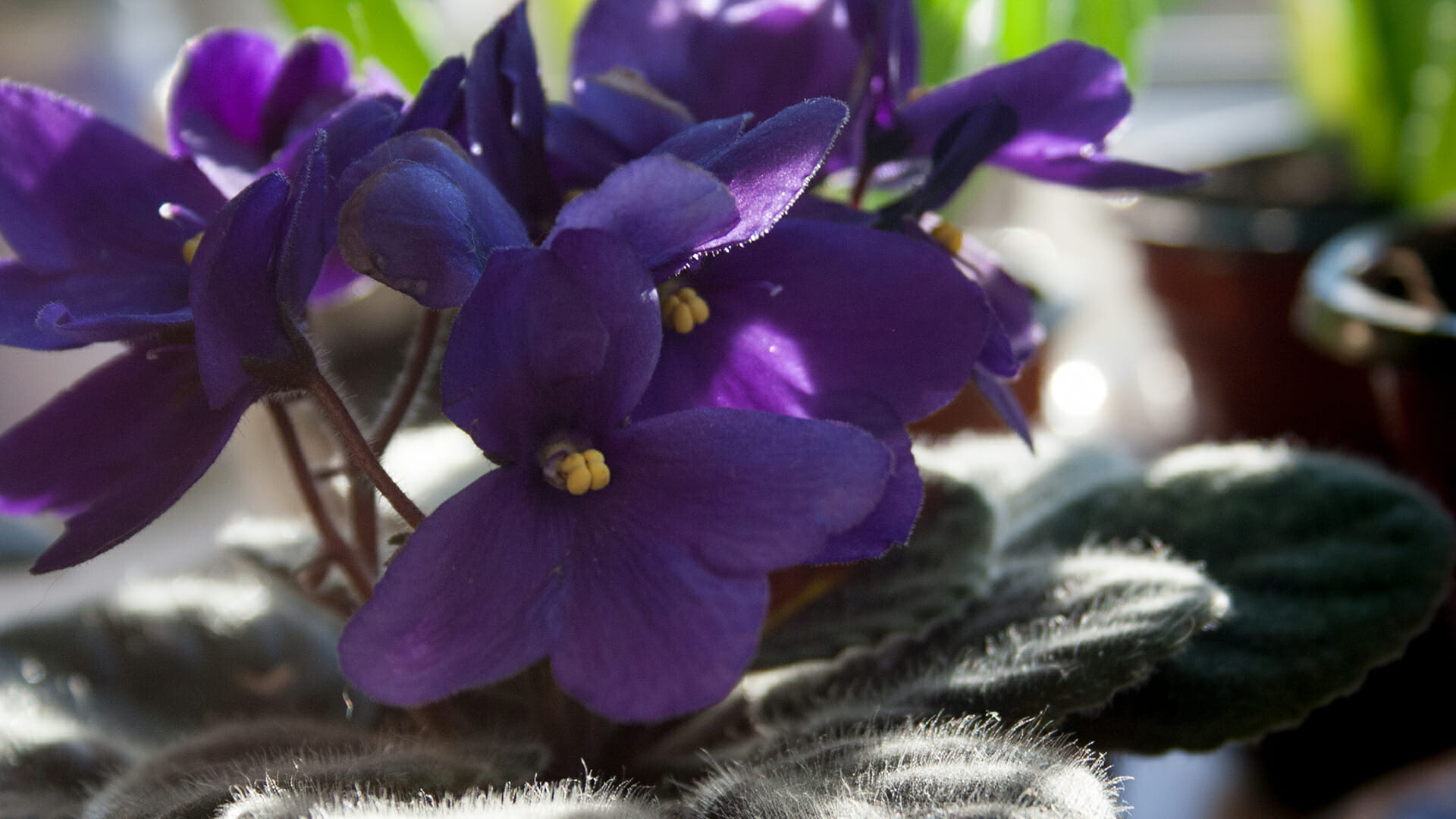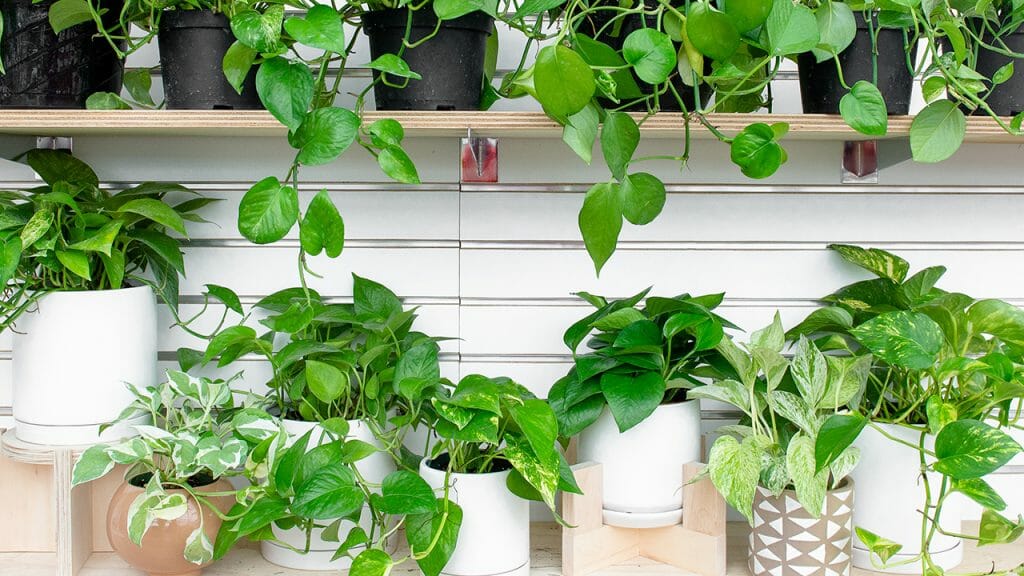African violets are gorgeous little plants that add beautiful pops of color around your house. However, if you have experience with these plants, then you know that they can be tricky to grow if you don’t meet all their specific needs.
By far, the most important element to get right when growing African violets is watering, so how often should you water African violets?
So, how often to water African violets? African violets should be watered whenever the top two inches of the soil have dried out. We suggest bottom watering to avoid overwatering and damaging the leaves.
If you get the watering schedule for your African violet figured out, you should be rewarded with riots of gorgeous flowers and large plump leaves. However, you also need to take into consideration your watering technique alongside this.
In this article, we are going to get to know African violets a little better and give you advice on precisely how to water them to keep them happy.
What are African Violets?
Before we get into the watering, let’s take a closer look at these gorgeous flowers.
| Specification | |
| Family | Gesneriaceae |
| Genus | Streptocarpus |
| Light | Bright, indirect sunlight |
| Soil | Loose, well-drained |
| Habitat | Warm but not humid |
African violets, or streptocarpus sect. Saintpaulia, are herbaceous, perennial flowering plants that are native to Tanzania, Kenya, and eastern tropical Africa. They have round, fuzzy leaves and bloom with clusters of purple, blue, red, and white flowers.
They are very popular as houseplants as they grow well indoors and have some particular needs that are easier to meet in a controlled environment. It can sometimes be hard to get plants to flower indoors, but African violets will not disappoint!
These plants tend to bloom more prolifically when they are in close quarters and not watered too often, which makes them ideal plants to house indoors. They won’t take up too much space, and you don’t have to water them constantly.
Despite the name, African violets are not part of the violet family; instead, they were named after the color of their purple flowers.
How Often to Water African Violets?
The general rule is that you should water African violets when the top 2 inches of soil are dry.
Watering African violets is a little more tricky than it appears. They are very sensitive to temperature and humidity changes as well as overwatering. In general, you want to keep your soil between moist and dry and never soggy. Leaving the soil to dry out slightly actually promotes blooming, so don’t be too eager to get out the watering can!
When you are watering your African violet, you need to be very careful because spilling any water on the leaves can cause discoloration. And that is only one of many sensitivities that these beautiful plants have when it comes to water.
Overwatering can lead to root rot and specific pathogens, to which African violets are very susceptible. This is why you need to be very cautious and purposeful with your watering technique and frequency.
To test whether your African violet needs water, insert your finger into the soil about two inches deep and feel the moisture. If the soil feels dry, its time to water it.
When it comes to African violets, you have two options; top or bottom watering. For both these techniques, we suggest using room temperature water as cold water can damage the plants roots or leaves. You don’t like cold showers, and neither do African violets!
Here is a quick guide for each watering technique:
To water an African violet from the top:
- Only water when the soil feels dry up to a 2-inch depth.
- Use a narrow-mouthed watering can so you can target your watering.
- Water as close to the soil as possible to avoid water getting on the leaves.
- Avoid overwatering as this can cause fungal growth and root rot.
To water African violets from the bottom:
- Place the pot in a dish or draining tray.
- Fill the dish with room temperature water and leave to soak for 30 minutes.
- Empty out the water and replace the dish underneath the pot to catch any runoff.
- Repeat when the soil has sufficiently dried out.
Out of these two methods, we prefer bottom watering because it reduces the risk of getting water on the leaves, and it makes it far harder to overwater.
Caring for your African Violet
So, now that you’ve got the watering down, what else can you do to care for them to help them grow their best?
Right from the outset, we recommend using specialized African violet potting mix and potting it in a relatively small pot. African violets bloom very well when they are in a tighter space and are slightly root bound, so don’t be too generous. You only need to repot them once every few years to renew the nutrients in the soil.
In terms of placement, African violets like spots that get nice, bright indirect sunlight. The leaves, as we have discovered, are very easily damaged, and exposure to direct sunlight can actually burn them. To avoid this, don’t place them on south-facing window sills or in any spots that get full sun for long periods in the day.
The ideal temperature for an African violet is around 65 F, so it likes things relatively warm. It is not always possible to maintain this temperature but to avoid temperatures changing too drastically; we suggest placing them away from any open windows or doors that could cause cold draughts.
African violets may be a little bit fussy, but once you’ve got their needs figured out, they can be very gratifying and beautiful plants to populate your house with.
Frequently Asked Questions:
Should you mist African violets?
We do not recommend misting African violets.
From this watering guide, you can see that African violets are very sensitive to too much moisture. Not only that, direct contact with water can cause discoloration on the leaves, so misting will cause some significant damage.
We suggest bottom watering like we have outlined above, as this will provide the perfect amount of moisture for your African violet to thrive.
Do you need to deadhead African violets?
We highly encourage you to deadhead your African violets because it encourages more blooms to grow.
This involves pinching off any drooping and dying flowers to make way for fresh ones to grow. This will reroute any nutrients and make the plant grow healthy and strong.
Conclusion
African violets may be notorious fusspots, but if you manage to keep them happy, they are worth all your hard work!
To sum it all up, we suggest watering your African violet when the top 2 inches of the soil feels dry. Although we have introduced you to two different watering methods, we prefer the bottom watering technique because it involves far less maintenance and reduces the risk of raising the humidity too high.
By following our tips, you are sure to have happy and healthy African violets for years to come.





